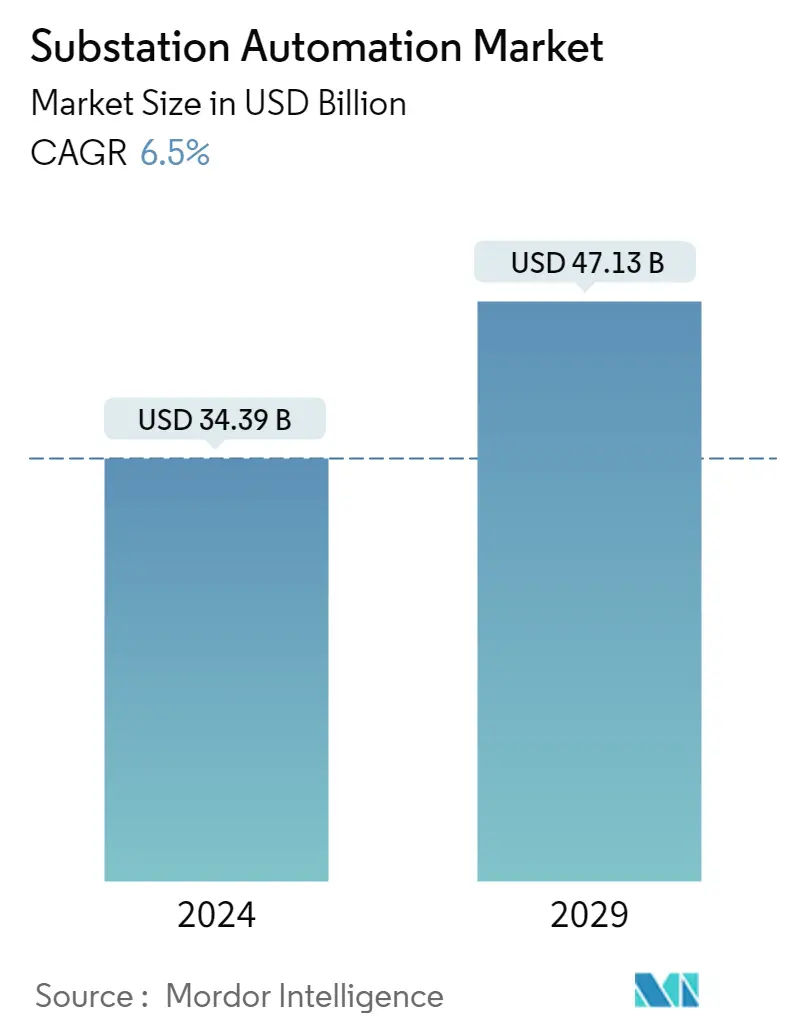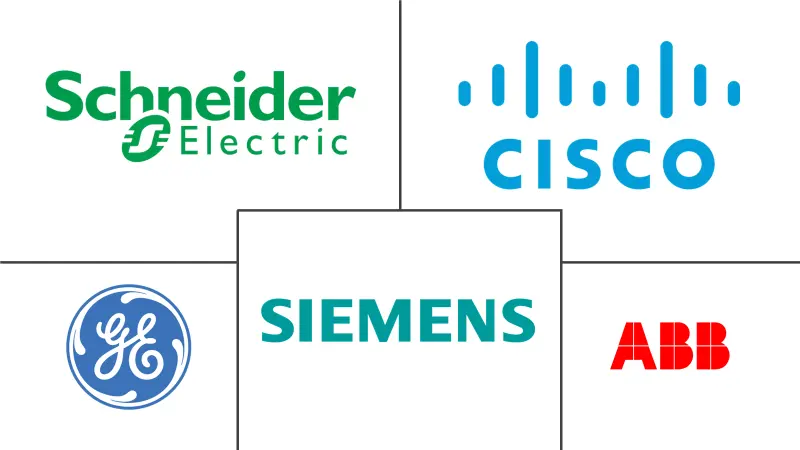Market Size of Substation Automation Industry

| Study Period | 2019 - 2029 |
| Market Size (2024) | USD 34.39 Billion |
| Market Size (2029) | USD 47.13 Billion |
| CAGR (2024 - 2029) | 6.50 % |
| Fastest Growing Market | Asia Pacific |
| Largest Market | North America |
Major Players
*Disclaimer: Major Players sorted in no particular order |
Need a report that reflects how COVID-19 has impacted this market and its growth?
Substation Automation Market Analysis
The Substation Automation Market size is estimated at USD 34.39 billion in 2024, and is expected to reach USD 47.13 billion by 2029, growing at a CAGR of 6.5% during the forecast period (2024-2029).
With the widening supply and demand gap, the power management has become one of the most critical worldwide concern areas. Energy consumption is increasing at one of the fastest rates globally; hence, the requirement of substation automation systems in the present-day substations to efficiently control and deliver power is highly sought.
- Substation automation provides protection, control, automation, monitoring, and communication capabilities as a part of comprehensive substation control and monitoring solution. Today, the substation layout is much cleaner. One can probably eliminate entire writing racks and cabinets or make them much smaller depending on how users handle their I/Os to the IEDs (intelligent electronic devices). High-speed microprocessor-based remote terminal units or smart electronic devices are used for substation automation and protection.
- The migration toward the future transmission and distribution substation is taking place because of the desire to bring more automation and intelligence to the power grid network to address a myriad of utility concerns, such as how to reduce operational expenses to ways to meet new regulatory requirements, such as NERC-CIP (North American Electric Reliability Corporation - Critical Infrastructure Protection).
- According to Smart Energy International, it is estimated that Europe will spend USD 23.9 billion to automate or monitor secondary substations over the next decade. Utilities in countries including France, Italy, and Spain are expected to be the highest investors in equipment and services, enabling the automation of substations.
- The smart electric substation's role in smart cities has become more critical than the traditional one. The key benefits derived from substation automation are increased reliability, early detection of faults and quick diagnosis, improved worker safety, and enhanced utilization of the smart city infrastructure.
- Further, the companies are allying to help digitize the grid and make it data-driven to meet carbon neutrality. For instance, recently, Enedis, Capgemini, and Minsait have joined the edge for smart secondary substations alliance, formed to develop a standard, flexible, manageable, and interoperable platform for next-generation smart grids.
- Additionally, the Indian government allocated INR 6,450 crore (~USD 868 million) for the smart cities mission under Union Budget 2021-2022, compared to INR 3,400 crore (~USD 457 million) in FY2021.
- Furthermore, COVID-19 impacted the electric grid usage patterns in the initial stage. But as things started to get regular and the market gained traction, the demand for electricity increased, thereby increasing the need for the market studied. As per IEA, electricity consumption globally was 25,300 terawatt-hours in 2021 and 23,966 terawatt-hours in 2020.
